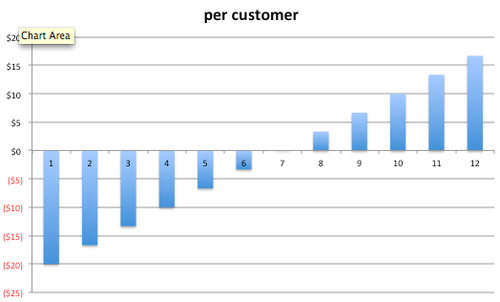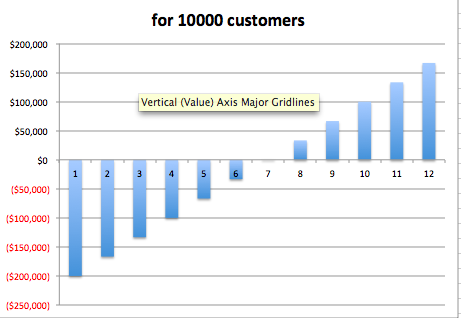
The 3 most important things a startup founder should think through before they even start
Lately I’ve had the luck to be approached by a number of startup entrepreneurs wanting to get some insight or advice from my learnings at PeoplePerHour. The first thing I always say is my no 1 learning myself : listen to advice, but don’t be afraid to act differently. Advisors will be wrong more often that great entrepreneurs as they know their business better than any other. So always take it with a pinch of salt. Same applies here.
That said, there are a few basics which I do believe are very transferrable across most businesses and especially online, regardless of the sector. And its these basics that I see missing more of then than not. Entrepreneurs can often be victims of what makes them entrepreneurs – passion, vision, and hunger. They are impatient by nature and they jump in.
Below are what I think the most important things to think through before you even start, and in this order.
1. Figure out your unit economics first
This is probably the most important starting point for me. Often neglected. Don’t just jump in to a business with wishful thinking check the unit economics to make sure you can acquire customers profitably and scale.
Here is a simplistic example: Lets say you are creating an ecommerce site. And lets say you will sell whatever it is you sell at 20% gross margin. Assuming you convert traffic to purchases at 1% (which is kind of industry standard), you need 100 visits to get one sale. If you are selling things whose average price is say $100, then you will make $20 from those 100 visits. So you will need to have a customer acquisition cost (CPA) of less than that just to recoup your marketing spend. To get 100 visits for $20 means you will need to have an average cost per click (CPC) of 20 cents.
Now, if your main go-to-market is Google Adwords as many ecommerce sites depend on, you will struggle to drive traffic at 20 cents per keyword scalably, unless you have found a market with very low competitive bidding, and even then a cpc of 20 cents is challenging. So either you need to have higher price points i.e. sell more expensive items, or margins higher than 20% especially since you will need to cover your fixed costs, or high frequency of repeat so that you can predictably recoup the cost on the next sale. Or ideally all of the above.
Typically, in order to be a sustainable model a business needs to make at least 2x the CPA in gross margin per unit. So if its costing you $20 to acquire a customer you need to make $40 in gross margin within a year. Which means on an $100 sale you need to have 40% margins, or if your margins are 20% you need to have every customer repeat at least once in the year, but ideally within 3 months of the sale otherwise the capital intensity of the business shoots off the roof.
Some businesses operate to longer breakeven points per unit of sale than 3 months, which is fine as long as you have enough cash to finance the upfront customer acquisition cost and wait it out until the customer repeats enough times in order to make the return. So for example if you operate on a 12 month break-even because your margins are low or you are selling items which are cheap, assuming for simplicity that your customers recur once a month (as they would in a subscription model) then to make that $40 gross margin you need $3.33 per month. So for each unit of sale your cash balance will be look like the graph below

But then multiply that by 10,000 customers and this is what your working capital requirement (just on customer acquisition marketing) will look like:

So its super important to get this calculation right and project what your capital requirements will be based on it. If you have other working capital burends like inventory etc they will be on top.
2. Go to market strategy
Once you’ve figured out the unit economics, and based on what they look like, you need to figure out your go to market strategy working to that CPA number.
So say for example however you tweak the above you cannot lift margins or average price per unit enough to get above a cpc of 10 cents. Assuming (which is an OK assumption) that that is what we call a blended cpc ie it is a mix of the organic and direct traffic you get as well as the paid traffic, then to get your cpc to that level you will need to figure out how the organic and free traffic makes the lions share of it.
If you assume for example that keywords for your sector cannot drop below say $1 per keyword, then to drop the average to 10 cents to make your model work you will need to have 9 free visits to every paid visit.
That sets the starting point of what your go to market strategy should be. Clearly in this case it cant be an SEM (Google Adwords) play, or advertising. So either you will be better at SEO than the others you compete with (and live with the risk that Google may one day wipe you out with a change in their algorithm), or have a winning strategy to have a more viral product, more engagement on social channels, or somehow stronger word of mouth.
To do that you will either have to have better service, or just a very innovative model with a high novelty factor. This is one that most entrepreneurs over estimate as they are naturally in love with their own product.
A good sanity check for this novelty factor, in order for this to work you need to be at least 5x better experience than the others, either direct competitors or the ones your ‘new’ model is displacing. Being marginally better is not powerful enough to get people to go out of their way to promote you.
Now remember: not all successful businesses need to be 5x better, just the ones that will get there organically with explosive word of mouth and virality. You can still disrupt industries without that with great execution, delivering marginal improvement but with great precision at scale. Which brings me to the next point.
3. Understand what you are good at
So based on the above analysis, its super important to understand whether your business is one that can scale with good execution with unit economics which work, or whether you will need to be an innovator and drive step change in order to capture the market.
That will define the culture you build in your company, who you hire but most importantly you need to figure out whether this plays first and foremost to your strengths. If you are a numbers gizmo or tech geek for example but not really customer centric or patient with customers and operations then its unlikely that winning on a better customer experience will be a credible go to market strategy for you.
High innovation businesses have the potential to be more explosive and eventually more disruptive. But it doesn’t have to be that way. There are many examples of amazing businesses built with low innovation but high execution. The fast followers of this world. You don’t have to be an Apple to win, and in fact if you are you may not be the winner either as Google and Samsung are demonstrating. Michael Dell disrupted the computer industry with great execution and relatively low innovation.
And then that understanding leads to your execution plan. If you depend on high virality as a go to market strategy you need to have a culture of questioning the status quo in everything, driving out of the box thinking from product design, customer service, operations, technology and marketing. You need to find ways to break new ground and wow the customer enough to get them to go out of your way to talk about you.
If you and your team like ‘business as usual’, consistency, don’t like change but know how to execute well on all fronts then you can still build a great business in most markets, and probably with lower risk than the former. But you need to make sure that the unit economics work, because you wont with that culture you won’t be setting the world on fire any time soon.
I don’t mean this in any derogatory way. In fact as an investor the latter is probably more investable and lower risk, and assuming the team has the stamina to carry on and the market is growing and big enough will eventually get there. But your capabilities need to fit the unit economics and go to market strategy. As basic as that sounds its often the least thought through and in this sequence.

















Your email address will not be published.